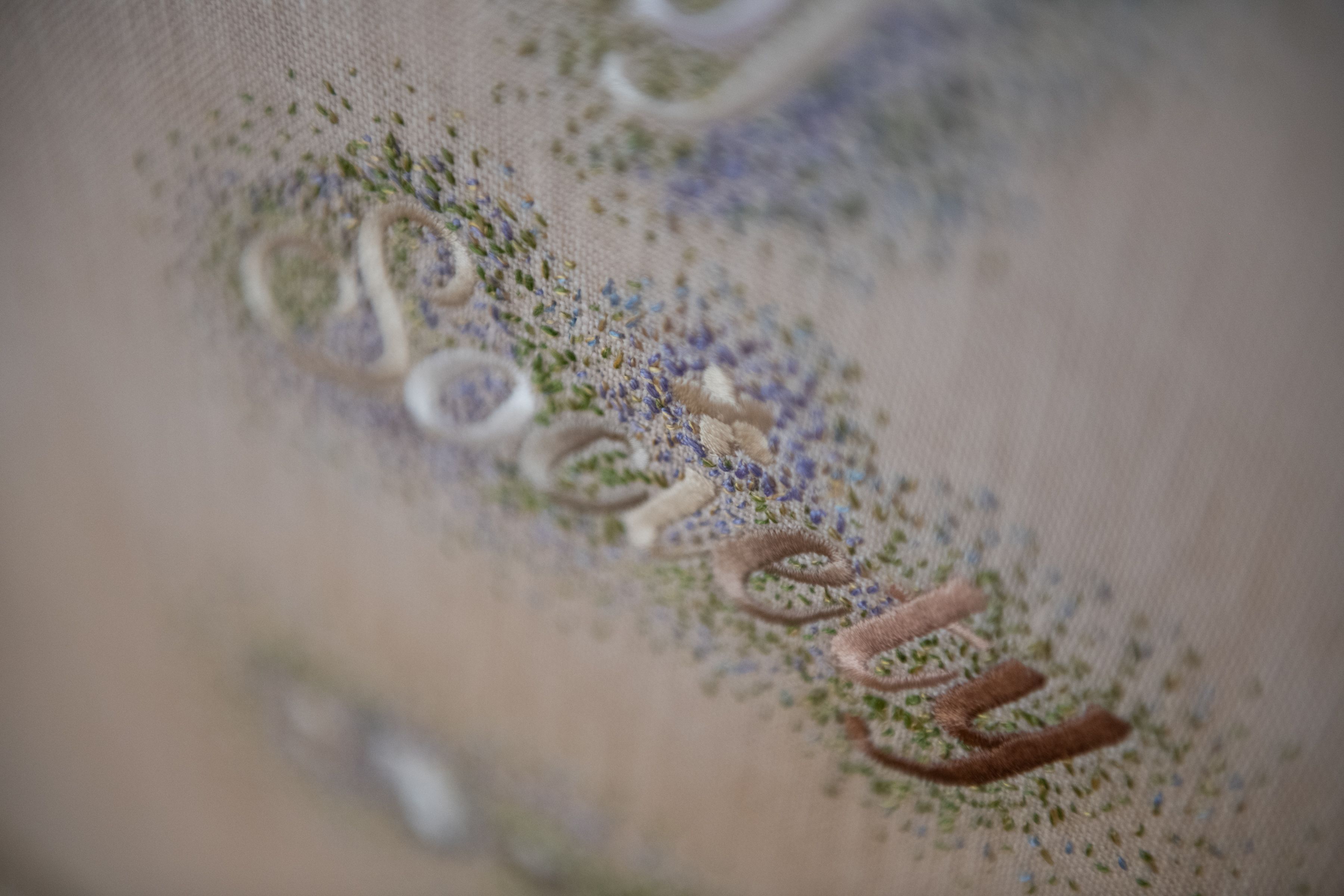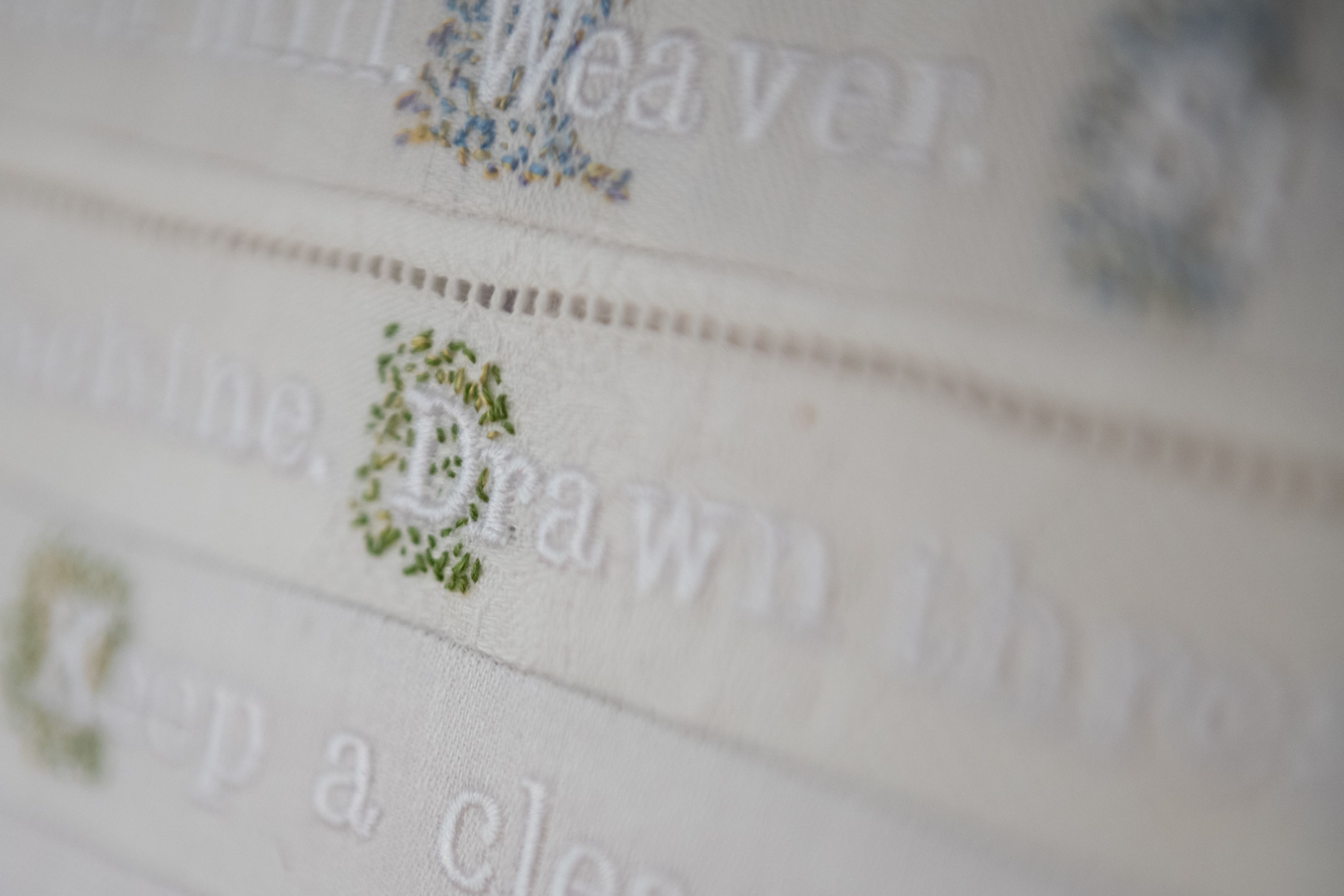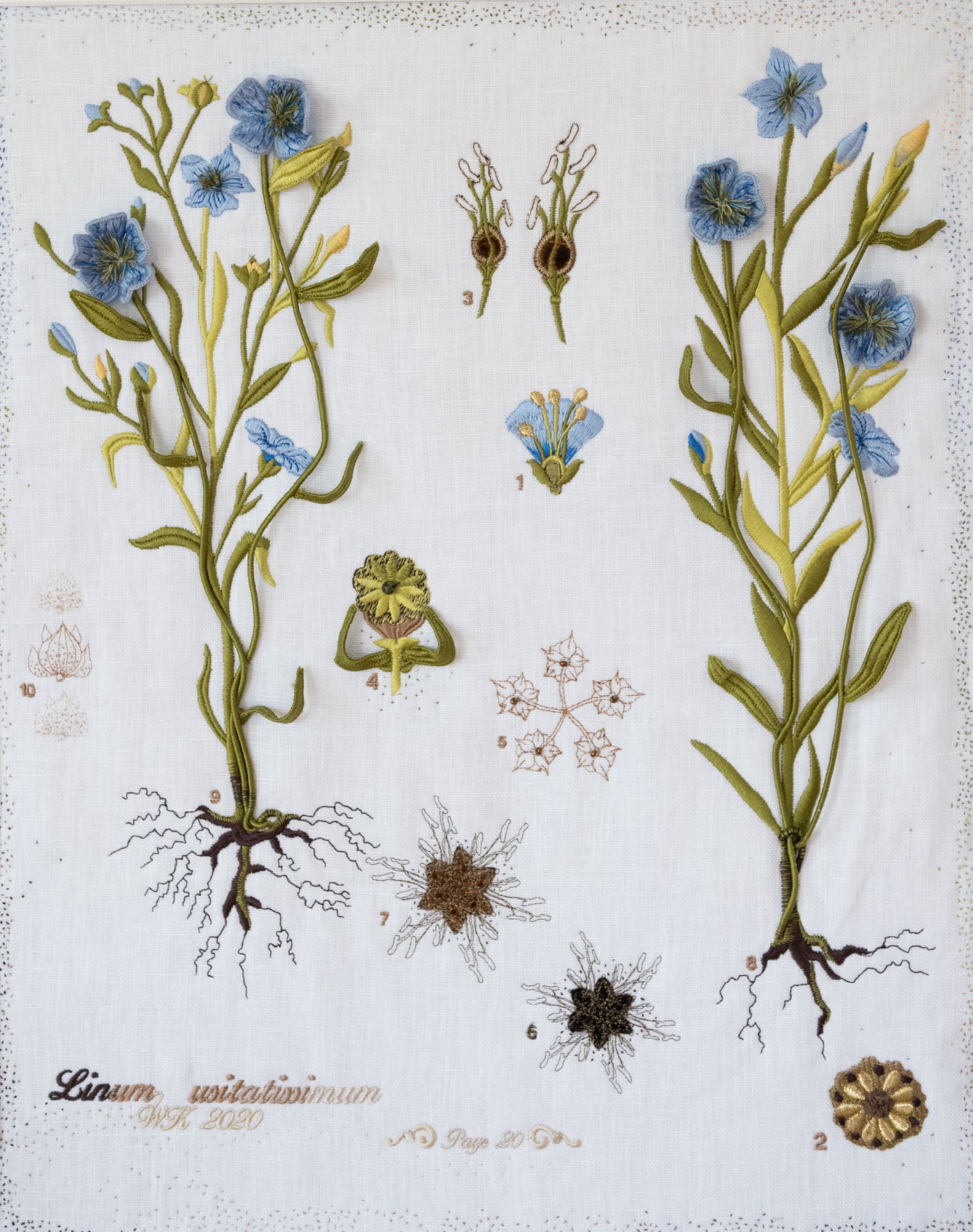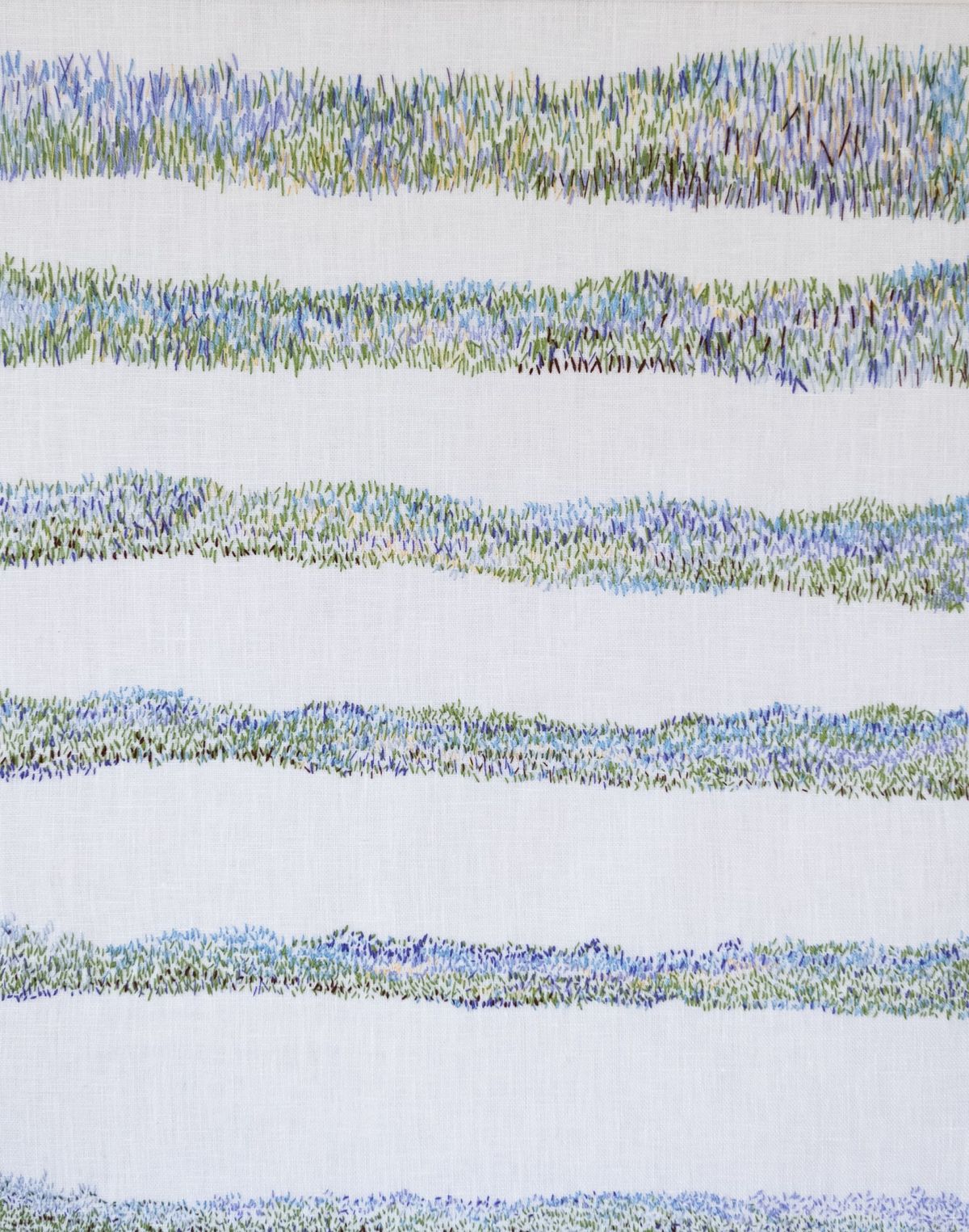Linen – the Fabric of Society
As the Cathedral reopens to the public, with safety restrictions in place, we also welcome a new exhibition situated in the Ambulatory. A showcase of three embroidery pieces Wilma Kirkpatrick and Helen O’Hare created over lockdown.
Wilma and Helen are Contemporary Textile Artists specializing in computerized embroidery and hand stitching. Helen comments that they “explore the media of textiles on a technical and conceptual level”.
Helen explains that “at an early age, I had a love for knitting and embroidery. It was a natural progression to study art”. Whereas Wilma, “was born into a family where knitting, sewing, crochet etc., was the normal”.
Helen O’Hare has over twenty years of experience working in art education and she is a practicing textile artist who has exhibited in Ireland, Scotland, England, America, Australia, Hungary, Finland and Bulgaria. She worked as a Textile Art Lecturer and was an Associate Member of the Research Institute of Art and Design in Textile Art, Centre for Applied Art Research at the Ulster University.
Wilma Kirkpatrick was, before she retired, a member of staff at University of Ulster for over forty years, working in the embroidery area. She has exhibited in Ireland, England, Europe and America, has worked on a range of commissions and has been the recipient of a number of awards in her career.

The work newly situated in Belfast Cathedral was designed and created for the 2020 Linen Biennale. Helen explained that for this project they, “took inspiration from the stories about linen - historical, cultural and social. We enjoy working with the properties of linen, especially the firmness, crispness and how it lifts the texture of hand and machine embroidery”.
During this project, Wilma and Helen had weekly discussions on how to move the pieces forward. This involved creative discussions about the possible approaches, research, designs, testing and deadlines.
Wilma and Helen worked collaboratively in the conception of plans for the art works. However, physically, they only jointly worked on the word-based piece, The Fabric of Society [image above and below]. Using a mixture of embroidered text and stitch markings, they took a selection of quotes associated with the linen industry in Northern Ireland to provide a sense of understanding of time and place. As Wilma describes, “The growth of the Linen industry sustained a class of gentry, which in turn left a rich heritage of linen houses, churches, libraries and museums. This was at a cost to the common people as wages were poor and child labour was prevalent, as a result showing man’s inhumanity to man”. This piece was made with the Log Cabin technique and was partly made from damask table linen that was handed down through generations.

Wilma created the intricate and detailed botanical drawing of a Flax Plant [below], the delicate three-dimensional petals of which emerge from the stretched linen, it's latin name linum usitatissimum is embroidered along the base with her initials and date.

Helen created the landscape scene of flowers titled, The Workers [below], which represents each individual who was involved in/worked in the Linen industry. Up until 1901, families with children aged 8 could start work, adding to the family earnings, children alternated their days so they could still attend school. In 1901, legislation was introduced stating that children younger than 12 could no longer be employed. This piece explores the diverse age groups and their journey to and from work.

The project initially began in September 2019 when the two first began to write the proposal, the possible concepts and techniques, and decided on the stories and quotes that would be included. The actual creation of the pieces began in January 2020 when the fabrics were prepared. It took two weeks of none-stop work to prepare the writing, digitise and construct the word-based piece. The Workers was made using only hand-stitching and took over 30 hours to complete. The works were finalised near the end of July but progress was slowed with lockdown.
Wilma and Helen have worked collaboratively on textile projects since 2012. The first project at Belfast Cathedral was the Titanic Pall [situated in the South Aisle]. A selection of Stoles was commissioned by the Cathedral afterwards which took approximately five years to complete from the first consultation with the then Dean of Belfast, The Very Rev. Dean John Mann.
It’s important to note that all of Wilma and Helen’s work in the Cathedral have been inspired by elements in the Cathedral itself. The flax flower is carved into one of the wooden pews here, and scenes depicted in the Pillar of Industry in the North Aisle were also a source of inspiration for the new works. The four scenes on the capital illustrate pulling flax, a woman spinning, a woman weaving and buying and selling in the linen hall. Linen used to be a massive industry in Belfast. In 1899, when the Cathedral’s foundation stone was laid, close to 70,000 people worked in the city’s linen mills.
Why not visit us today to discover more!
© Photographs by Emma Hutchinson
